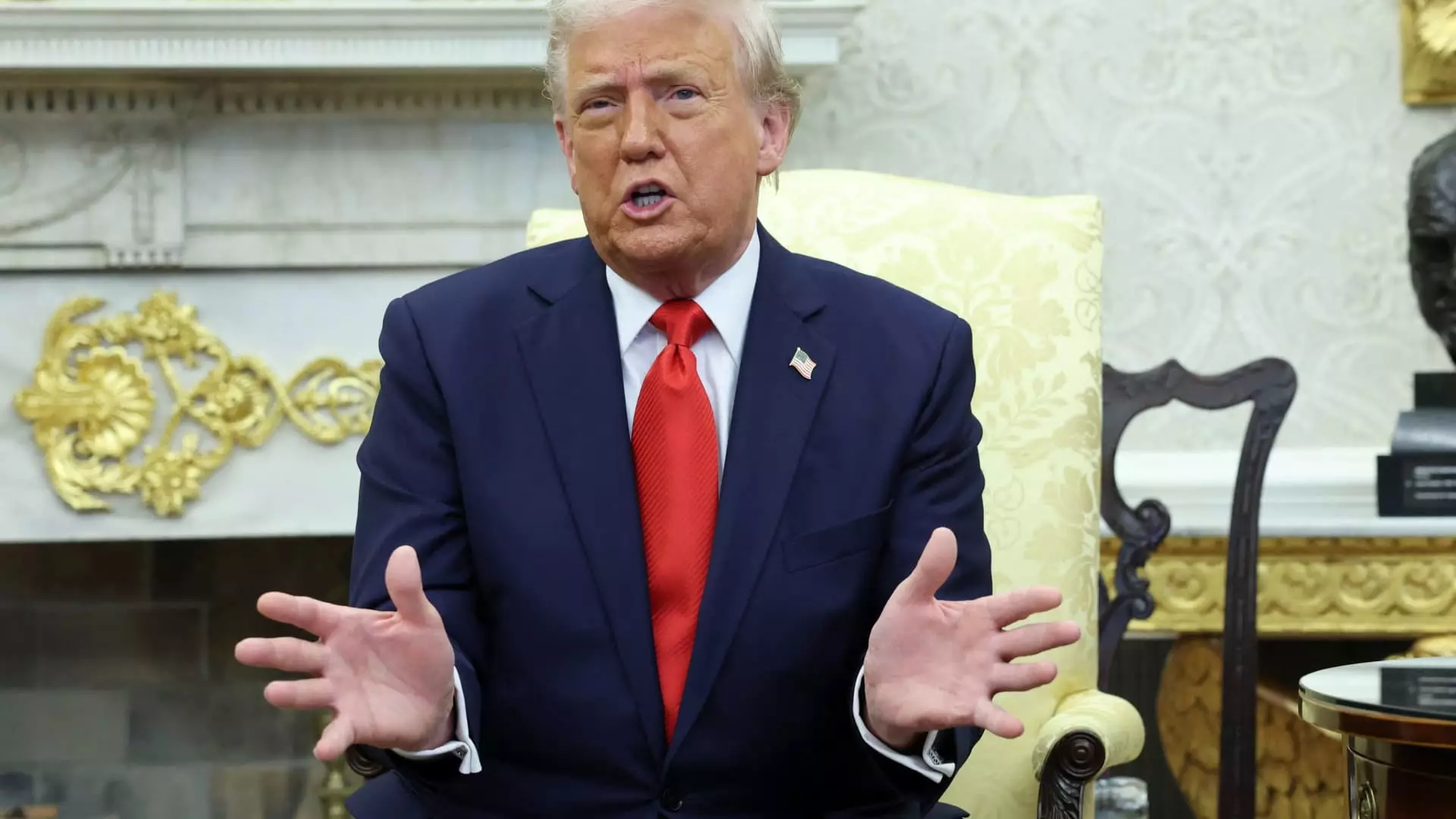The first quarter of 2023 has witnessed a striking anomaly in the world of finance: Wall Street banks, including titans like Goldman Sachs and JPMorgan Chase, executed unprecedented stock trading transactions, raking in an eye-popping $16.3 billion. This figure, a staggering 33% rise from the previous year, suggests an uncanny ability to thrive amid chaos. The circumstances surrounding this surge—notably the volatility triggered by the Trump administration—reflect a complex narrative where uncertainty emerges as a trading boon. Such activity challenges the traditional wisdom of a stable economic environment being better for robust financial growth.
In light of this environment, it’s vital to scrutinize the implications of such trading successes. Institutional investors, initially projected to benefit primarily from mergers and acquisitions, instead found themselves leveraging the market’s unpredictability. As Trump quickly pivoted from trade agreement to tariff, traders seized the moment. The market interpreted his actions as both alarm bells and opportunities—a duality that is typically anathema to corporate stability. This trend raises fundamental questions about our reliance on Wall Street: Should we celebrate their record profits or lament the systems that allow them to capitalize on crises?
From Investment Banking to Trading Floors
According to analysts, the disparity between the roaring success of trading divisions and the tepid appetite for traditional investment banking signals a troubling shift. While corporate leaders remained paralyzed by uncertainty regarding long-term strategic moves—evident in the stagnant merger activity—trading desks thrived on the frenetic pace of market movements. Morgan Stanley’s CEO, Ted Pick, emphasized the need for traders to “rack up gains,” inviting us to consider whether this high-octane world truly represents success or merely a survival instinct operating at the margins of ethical financial practice.
With unemployment projected to rise and the economy facing headwinds, the gains in trading could be seen as a double-edged sword. While investment firms enjoyed soaring profits, the same crisis backdrop has forced regional banks—typically less entrenched in trading—into treacherous waters. The economic reality that larger banks can navigate these uncertainties with greater agility poses a significant threat to smaller financial institutions, which may not weather the storm so well. This disparity cements the notion of a finance sector stratified not only by wealth but also by operational effectiveness during crises.
Market Activity: A Reflection of Governance
The irony here lies not just in the profits, but in the broader implications of market stability tethered to governance dynamics. Back in January, the newly inaugurated Trump made startling assertions regarding tariffs, predicting a cascade of volatility that traders could exploit. From these decisions flowed a cycle of erratic market behavior that capitalized on anxiety rather than assuredness. This behavior casts doubt on the integrity and robustness of the financial systems which thrive in disorder. Should we be concerned that traders are now more inclined to profit from chaos than to stabilize markets through informed investment and long-term strategies?
Indeed, the “Liberation Day” announcements in early April reveal how political decisions can send ripples of volatility through the financial ecosystem. Much like a maestro conducting an orchestra, these announcements led to synchronized movements across equities and bonds—showcasing how intricately politics and finance engage one another. Does that intersection indicate a precarious dependency on political whim? Or can we position this volatility as a catalyst for genuine financial adaptation amid tumultuous times?
Trading as the New Norm
There’s a provocative narrative unfolding whereby Wall Street’s very essence is evolving. The aftermath of the 2008 financial crisis led to a consolidation of power in fewer firms, prompting a paradigm where trading—not traditional investment banking—has become the primary growth engine. Financial firms have adeptly shifted from wager-driven risk towards facilitating trades and providing substantial credit lines to clients. In such an environment, profit is harvested not by holding stable investments but through the orchestrated chaos of market activity. James Shanahan, a bank analyst, points out that without a halt to volatility, trading desks are destined to remain busy.
It raises an important inquiry: does this reliance on instability represent prosperity, or a concern for the future of capital markets? The narrative must shift if we’re genuinely to reconcile ethical governance with economic functionality. As Wall Street evolves, so too must our understanding of what constitutes success in this brave new financial world. The very fabric of our investment system may hinge not on productive investments but on the continued ebb and flow of unpredictability we currently see—a colorful paradox in a capitalist framework that calls for deeper reflection across all sectors of society.

